Aritcle by Nick Shannon We explore 5 projects that show you how to use water in landscape design. We use water every day, and in so many ways. It is such a ubiquitous resource, but we often don’t think twice about using it or how it is handled within hidden infrastructure. In the landscape, water is what sustains life and civilization. We need it to survive and thrive, and access to healthy, potable water is a pressing concern that the field of landscape architecture can really impact. Water needs to be addressed and to be regarded as a precious resource, as well as an opportunity to create sustainable landscapes that function well and are designed for humans, wildlife, and the environment. Here are 5 extraordinary projects that will inspire you to think about the many different ways to use water. Sustainable water management is not just for the environment, but for people and wildlife as well. (Click on any of the images to find more information about the project)
Water in Landscape Design
5. INFILTRATION Zollhallen Plaza by Atelier Dreiteilt in Freiburg, Germany The water we drink depends on ground and surface water to recharge bodies of water, reservoirs, and wells. When it rains, water infiltrates into the ground and recharges the ground water, but in urban areas, pavement intercepts this cycle and moves water away from the place it fell. The first way to effectively use water is to infiltrate it. Let it naturally seep into the ground to recharge the ground water and bring back the natural function of the landscape. Zollhallen Plaza in Freiburg, Germany, keeps stormwater and runoff from flowing into the sewer system; it was designed to handle all of it on-site. Permeable pavers allow water to pass through the hardscape, and the grading of the plaza directs water towards planting areas. Cisterns are also used to capture the water from a 100-year flood event and hold it until it can infiltrate into the soil. This plaza is a beautiful site that handles water in an efficient way. Zollhallen Plaza shows us that it is possible to think outside the box and don’t just pave everything – infiltrate first! Any new development today has to deal with at least some of the stormwater on-site, but doing it all takes this project to the next level. It creates a more resilient water management system.
4. ECOLOGICAL Orongo Station by Nelson Byrd Woltz in Poverty Bay, North Island, New Zealand Water not only sustains humans, but wildlife depends on it also for its ecological value. Unfortunately, human activity has changed natural water systems and degraded critical wildlife habitat, but the field of restoration seeks to address issues facing habitat loss to bring back functioning ecologies. Nelson Byrd Woltz is leading the field in the integration of water, restoration ecology, and agriculture. As part of their conservation agriculture studio, the Conservation Master Plan for Orongo Station in Poverty Bay, New Zealand, restored wetlands to use water as an ecological driver. Historically, the wetlands were drained to be converted to grazing lands and one of the objectives of this project was to bring them back. However, these are no ordinary wetlands – they were designed as a living piece of art. Two kilometers of deep river winds through seventy-five acres of constructed wetlands. Inspiration was taken from the landscape architect Roberto Burle Marx and his highly abstract work. Freshwater wetlands and salt marsh brought back native ecologies and now provide habitat for the native flightless birds on the island. This project conserves places that should have never been farmed while integrating them into the cultural landscape of the native Maori people. WATCH >>> From landscape architecture to conservation agriculture | Thomas Woltz | TEDxCharlottesvillePre-treatment swales gather freshwater, filter it with plants, and hold it in the wetlands until it can be infiltrated. The agricultural fields were rearranged to accommodate the restoration and their edges were forested to protect the citrus crops. This integrates human activity with natural systems that work in harmony. Landscape architecture has the potential to push this idea and use water to our advantage, and other species’ advantage, as well. 3. PURIFICATION Park van Luna by HOSPER in Heerhugowaard, the Netherlands Using water in design is not just about collecting and infiltrating. Purifying the water and cleaning up the pollution it carries not only leads to a healthier community, but a healthier environment. Water management can be subtle, or in-your-face, like Park van Luna in the Netherlands. Here, a residential development is integrated with recreational opportunities and a large body of water that reduces floods, preserves wetlands, and harvests stormwater. Part of the larger City of the Sun, the whole development will run on renewable solar energy, making it carbon neutral. It is on an island, surrounded by a 60 ha lake, so it just makes sense to embrace the water and manage it in a unique way. Reducing our climate footprint, while preserving the environment, is how the field should push new development in the future. Out of a total of 177 ha, 75 ha are dedicated to open space and sports; activities that promote social interaction. A 1 km beach, sports center, and walking /cycling paths, encourage a healthy community. In regards to using water, this project excels in the purification of the water it is so integrated with. A natural purification plant, a de-phosphatizing pond, and a pumping station all encourage residents to interact with and learn about the systems. The system was also designed to store a large amount of water to be used during the summer months.
2. HOLD AND RELEASE Waterplein Benthemplein by De Urbanisten in Rotterdam, the Netherlands Another revolutionary way to use water is to hold it, and then release it gradually in order to lessen the burden on conventional water treatment systems. This decreases CSO overflows and allows treatment plants or natural bodies of water to slowly deal with the ever-increasing occurrence of floods which climate change is causing today. Waterplein Benthemplein in Rotterdam, the Netherlands, utilizes public space to address the issue of floods. Three concrete basins were designed to hold water, then release it slowly. This is truly a unique way to design multi-use public space. One of the basins is fed by a waterfall which directs rain water into it, and the others are graded to collect surrounding runoff to fill up. In dry weather, each basin has a different use. People utilize them for seating, football, and volleyball. Intimate spaces are created with plantings that uptake the water as well. Rotterdam is a city of water, and dealing with it in the public square is an in-your-face way to create multi-functional spaces that increase the efficiency of stormwater management while educating the community. The temporary storage of excess rain water can increase the efficiency of our infrastructure and show us what really happens when it rains. WATCH >>> Waterplein Benthemplein1. SMALL SCALE SITES ADD UP Ecodistricts, in Southwest Washington, DC, United States One of the most efficient and easily-implemented ways to deal with water in the environment is through a network of small-scale interventions that mitigate runoff and pollution. Designing a system is what works, and is how new development should be tackled – it creates a cohesive landscape that addresses issues in every way. Imagine if every new renovation and street incorporated stormwater plantings on it. The benefits add up quickly and result in an efficient system overall. This is exactly how the SW Ecodistrict in Washington D.C. was designed. As a planned mixed-use neighborhood, SW Ecodistrict incorporates sustainability in every detail. Rich street life is achieved through green streets and a greenway that accommodates biking, walking, and urban agriculture. Excess stormwater is captured in tunnels which bring it to be treated and reused as freshwater for the neighborhood. Every surface is maximized for efficiency – food is grown on roofs, streets, and the sides of buildings. The streets are lined with stormwater swales that are beautiful, attracting wildlife and people, while functioning on an environmental level. This project really fosters community stewardship and sustainability. The stormwater tunnels move water and bring people to connect with natural systems, incorporating them into the streets where they can become an asset.
Water in Landscape Design
Water can be utilized in so many ways, and these projects prove to be exemplary examples of just a few of the innovations in water management. Stormwater should not be viewed as something that we ‘have to’ deal with, but rather as an opportunity to create a more sustainable and efficient community that brings people and nature together as one. Use some of these ideas to think about the water cycle and engineered infrastructure in new ways, related to design as a whole – incorporating water, people, buildings, and nature into a dynamic harmony. What is your favorite project that uses water in an exciting way?
Recommended Reading:
- Becoming an Urban Planner: A Guide to Careers in Planning and Urban Design by Michael Bayer
- Sustainable Urbanism: Urban Design With Nature by Douglas Farrs
Aritcle by Nick Shannon
Published in Blog



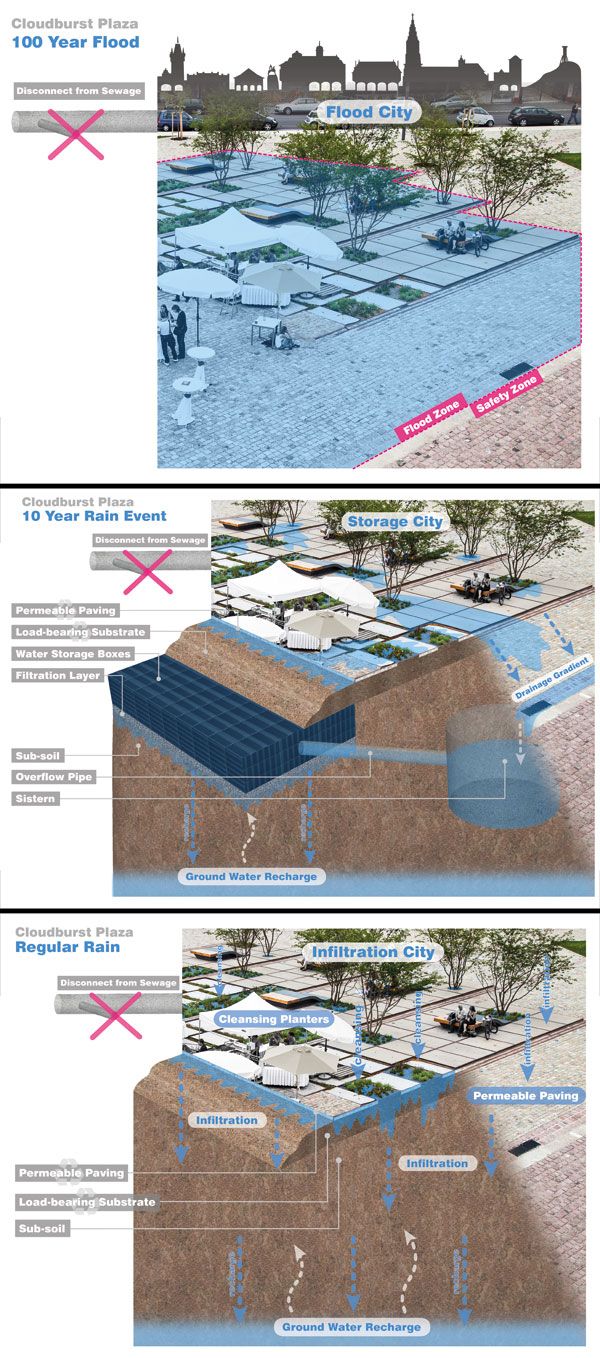
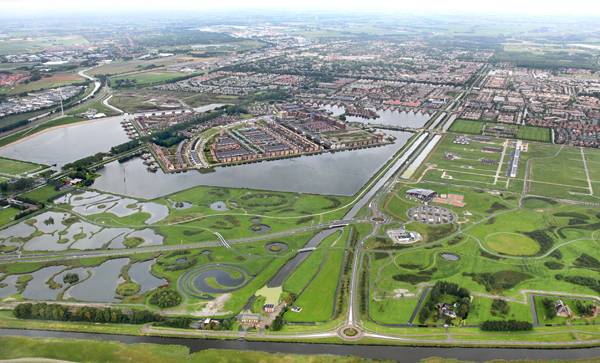
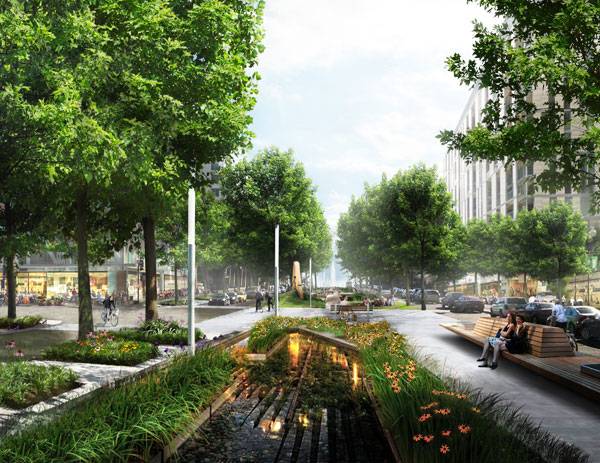
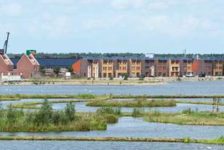
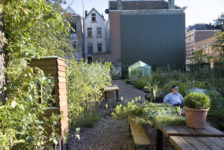
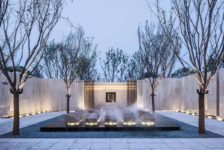
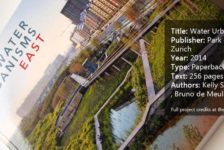

Pingback: Best Landscape Design Books 2018 – Homepedia